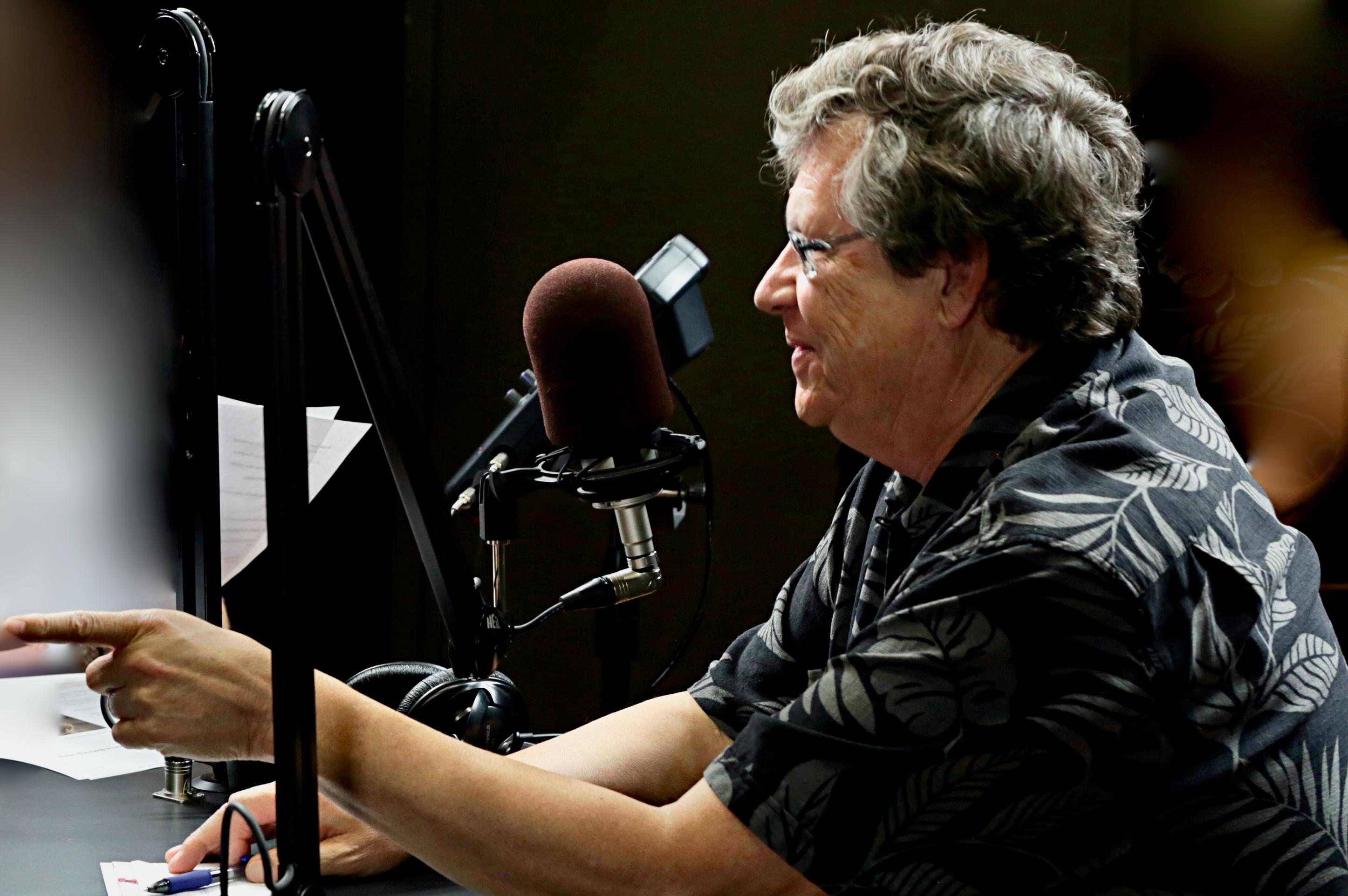
Clarise was in love with her friend. Again.
They didn’t have any classes together last year, Clarise’s freshman year at Denver School of the Arts, but they’d been texting pretty consistently and chatting in person now and then. They were getting close again as summer approached and Clarise was leaving the country. They needed to talk.
“There were just some things that I wanted to tell her before I left and just, like, work out with our friendship,” Clarise said. We're just using first names for teens under 18, to protect their privacy. “But since we were so far away from each other, it was so much easier to work it out via text.”
And so, in two conversations several days apart — one lasting six hours and one lasting 20 minutes — that’s what they did.
Smartphones are destroying interpersonal skills, the thinking goes. But what if they’re only changing the way interpersonal skills look?
The dangers of smartphones are well known: Teens can bully 24 hours per day and with anonymity. They can be tormented anytime, anywhere. They might make mistakes that follow them forever because the internet is forever.
But with the buffer of physical and digital space between them, teens told us they feel emboldened to speak more freely, to be more honest, for better or for worse. Via text and direct message they can take a moment to compose their thoughts. And in the deep, wide ocean of the internet, they can find like-minded people and they can find help in support groups.
A 2018 Pew Research Center study found that teens who are online almost constantly are much more likely to report being more in touch with their friends’ feelings, being more connected to what’s going on in their friends’ lives, and feeling like they have people who can support them through hard times, compared to teens who are online less frequently. (They’re also much more likely to report feeling “overwhelmed because of all the drama.”)
It also found that teens who are constantly online are just as likely to spend time with their friends in real life. Sixty-nine percent of teens who constantly are online say they talk to their friends online every day or almost every day, compared with 52 percent who are online less often.
If you need help, dial 988 to reach the Suicide and Crisis Lifeline. You can also reach the Colorado Crisis Services hotline at 1-844-493-8255 or text “TALK” to 38255 to speak with a trained counselor or professional. Counselors are also available at walk-in locations or online to chat.
Teens now might not be talking about their feelings and working through conflicts face to face as often as previous generations had to, but they’re definitely talking about them — all the time — on their phones.
“It's like the quintessential movie storyline,” Clarise said. “I liked her. I'd liked her before and then she hadn't liked me back, but then I'd fallen back in love, as one does, and then it's very hard.”
Texting about it was much easier for her, she said. She was able to be more honest, not to mention relieve some of the awkwardness or additional pain that comes with facing someone.
“I'm a writer, it's a lot easier to write things than say them, especially when it's an emotional situation, and saying things to a person can be very — like I'm prone to crying and whatnot, so it's easier to just text and cry behind the screen,” Clarise said.
“But we were just texting about it and it allowed for a lot of clear articulation of how we were feeling, contrary to how it might have been if we'd been talking face to face. So I really appreciated, like, using the text messaging and the DMs as a resource to work out our feelings and communicate.”

Cassandra Walton, a facilitator with Pikes Peak Suicide Prevention, has seen this kind of emotional problem-solving in her work and in her research, and said that it’s widespread.
“We’re living in a time where most of our kids’ relationships are happening online.”
A few summers back, Pikes Peak Suicide Prevention surveyed more than 100 teens and, among other things, found that most of the teens see phones and social media as resources, with benefits that outweigh the negative experiences.
Among those benefits is the ability to slow down a conversation and think it through more carefully.
“They take the time to think about what they're going to say because they’re not in the spotlight and it gives them more time to think about what their response will look like,” she said.
If anything, some teens feel like they’re talking too much.
“It's so weird because when you think about it. Like I could be texting my friend now and also trying to talk to you. So you're sustaining like all these conversations, like an octopus, which you wouldn't normally do in real life or without a phone,” Clarise said. “... In the evening it's like my mind is always about to explode because it'll be like three conversations at once with three very energetic people and I'm just like, I can't do this anymore.”
Clarise is only on Instagram and estimates her daily phone use is three to four hours a day. A new study released this week by Common Sense Media, which examines young people’s tech use, found teens were on screens an average of 7 hours 22 minutes. That doesn't include time on screens for school or homework.
But for some teens, those more public social media conversations are no replacement for in-person chats. Jonah Martinez doesn’t resolve conflicts as much on his phone — he calls himself an old soul. He estimates his daily phone use to be only about an hour, though he’s on all of the major social media platforms.
The 18-year-old Arrupe Jesuit High School student thinks the pros and cons of phone use depend on the phone user.
“People can’t talk in person but they’ll make it public on Facebook,” Martinez said. “Like, ‘I love her so much,’ and I'm just like, what?”
On the flip side of the tyranny of too much access, though, is the freedom of easy access — the ability to explore the world and talk about it anytime, anywhere.
Both Clarise and Martinez see their phones as windows into other worlds and fountains of new ideas. They use them to build new relationships and talk about pressing issues.
Clarise has made friendships online that eventually grew into in-person friendships. She’s learned about intersectional feminism thanks to the internet and she and her friends recently had long text discussions about the fire in the Amazon.

Martinez, who says he doesn’t learn about climate change or LGBTQ issues in his Catholic school, learns about those things online and talks about them with his friends.
“My friends are always trying to dig deeper into that and stay updated and understand real-world problems and things like that,” he said.
Martinez’s phone really came to the rescue when his friend learned her father in Mexico had cancer, and she was rushing down there to see him. It was a weeknight and even though he couldn’t physically be there, he wanted to be there for her. She said she couldn’t call because her family was scrambling. They’d fly to El Paso, Texas, then get on a bus.
She bought WiFi on the flight so she could text Martinez again, he recalled. She explained what happened and told him about her history with her dad — how the distance between them makes it hard to have a good relationship. The news of his illness was kind of a surprise and she was “kind of in panic mode,” Martinez said.
“I was just trying to help her, guide her and not be too serious, but at the same time be serious enough that I could get advice or points across.”
Normally he thinks a lot more about what he’s texting, he said, wondering if he’s saying the right thing in the right way. But in this case, he just wrote what he felt and he “wasn’t looking back.” Where Clarise used texting as a way to carefully present her feelings and give herself time and space to do it, Martinez used it to quickly come to his friend’s aid with compassion and advice.
“I definitely know that phones are not just bad, social media is not just bad. Like for me personally, it's done a lot of good in my life,” Martinez said. “I’m always encouraging people to go out, meet people, hang with people ... but yeah, I definitely do think that phones have a great impact on who teens are, especially today, and being more open and honest and not being scared to say something.”
Parents, now as ever, are worried. They know well how much time their teenagers spend on their phones, but they know much less about what they’re doing with them. How it might affect their interpersonal skills as adults is a troublesome mystery.
Asked what her 13-year-old stepson Ayden looks like when he’s on his phone, Bree Neely of Denver said, “In a trance. Trance-like.”
There aren’t any outward signs of anxiety or anger. Sometimes there’s laughter at YouTube videos. But any interpersonal drama goes unseen.
Karen Vittetoe, a teacher at Denver’s South High School and mother of three teenage girls, said she sees “a little bit of every emotion.” Her daughters Isabella, Mythili and Riona are 16, 15 and 13, and even across that age range, the phone use can be different.
“My oldest does not like to talk to people on the phone, she thinks it’s weird to have an actual conversation. My middle child is like that too. My youngest uses the phone for FaceTime or WeChat,” she said.
Ayden has had a cell phone for about four years, Neely said, but isn’t on social media except for Instagram. Texting is his primary mode of communication with his friends, and Neely thinks they text “quite a bit.”
“They do communicate a lot,” she said. “And if you’re out of the loop on that, it's somewhat akin to when you’d be out of school and your friend group would move on without you. I do think they resolve a lot. But I also think their communication and so forth totally stinks.”
Vittetoe isn’t confident in teens’ communication skills either, as a mother and as a teacher.
“I think they’re losing a skill. I don’t think they’re having productive conversations,” she said.
Laurie Rohan sees it a little differently. Her 16-year-old, Fin, is trans and a student at DSST: Byers, where things got harder for them when they came out as lesbian, then later as trans. They find knowledge and acceptance through their phone.
“Their social media has become their safety net, where they can go and have other people support them,” she said.
“I think it’s a completely different style. I think they’re creating their own form of communication, their own ways,” Rohan said. “I think that they've come up with this whole new way of communicating that is putting emotion into text. There is this whole world of communication being developed.”

As the school psychologist and the school social worker at George Washington High School, Susan Stein-Shevell and Sarah Hartman are handling an ever-growing amount of phone-based conflicts.
“I've had a lot of kids just ask me to read, scroll through a conversation, they're trying to say, ‘This is why I'm in here and imploding,’” Stein-Shevell said.
“They’re being interpersonal without having to be face to face, in some ways,” she added. “There was a friendship issue and an outcasting and this young lady was told, ‘This is why nobody wants to talk to you anymore.’”
So Stein-Shevell and the student talked about how she wanted to handle it, how she could feel OK about it. It came down to a decision to send a group text asking for forgiveness or to ask forgiveness of the group in person.
“And we had talked about it and she said, ‘I think I feel better doing it in a group text. I don't know if I could manage — if it didn't go well, I don't want to see their faces,'" she said.
It’s the nature of Stein-Shevell and Hartman’s jobs that they only see kids who are struggling to some degree. Hartman said it was in 2010 when they started to see more issues with phones, and in the last five years school staff have been talking more about how the presence of smartphones changes the school day.
That includes things like students texting to meet up — or organizing a group to jump another student — when they should be in class. Much of it is what they see is what Hartman called relational aggression.
But where there are problems on teens’ phones, there are solutions on teens’ phones. Hartman said they recommend suicide prevention apps and meditation apps to students who are struggling, and that teens who aren’t finding friends at school are making them online. The Safe2Tell app saw an all-time high in reports this August — a 75 percent increase over last August that included 235 reports of suicide threats — and even Snapchat has become a valuable tool. Students are using it to identify suicidal thoughts in their friends and report it to someone who can help. And while social media comments make it easy for teens to gang up on their peers, they also make it easy for others to come to their defense.
Phones also allow teens to act on their impulses, for better and for worse.
“When you think about the adolescent brain and the flight or fight mode they go into sometimes when they feel targeted or attacked — I do think that sometimes our students and I think even some adults respond way too quickly and don't think as much about what they're saying,” Hartman said.
But — and here comes the inevitable cliche — it gets better.
“When they get a little bit of support and scaffolding and training … they do get better at it,” Stein-Shevell said. “They get better at recognizing what they need to do the more they practice it. And they practice on social media. They definitely do.”
One of the things Martinez and Clarise have in common is that they find opportunities for self-reflection naturally in texting. When they write out their feelings, they can take their time, review them and be introspective.
“There's definitely been times where I'll write something, especially when you're giving advice to someone, you'll type up that advice, send it over and then you kind of think about your life,” Martinez said. “Maybe I should take that advice.”
When Clarise first told her friend that her feelings were stronger than friendship, her confession launched a quarter-day’s worth of texting. There was a lot to be said and a lot to sort out.
And when days later she realized she had more to say, she picked the phone back up. In that time, she said, she’d healed a little and processed a lot. With another 20 minutes texting back and forth, they were in a place where they could move on. Clarise said it’s for the best.
“We're really good friends now and it's like the happiest I've ever been in a friendship with her,” she said.
In this case and in general, Clarise has appreciated the space between individual thoughts and even whole conversations that texting creates — whether it’s because people’s lives get in the way or because they just need a minute. It allows for self-reflection and reflection on the situation, she said.
It was in texts, too, that she talked to friends about how it all made her feel.

“When you're talking, it's so quick, like you don't really have time to think. It's spur-of-the-moment, which is often to my downfall because I have — not a bad filter, but I just can't filter things because my mind is always moving so fast and then the words are coming out,” she said. “So it's almost liberating, having that moment of getting to pause before you respond and having a chance to process what you're going to say and … be meaningful with what you're going to stay too.”
Now, in Clarise’s sophomore year, they have classes together and they talk more. She’s happy with the way things turned out:
“At the end of the day I'm just glad that it got resolved and that it was really genuine. Like the most genuine I've been able to feel about things.”
We want to know more, and we hope you do, too.
CPR News will spend the next few months investigating the factors that have created the ultimate pressure cooker for some teens. We’ll go into their world through audio diaries, interviews, reflection and analysis. Most importantly, we’ll examine what teens, families and schools can do to let some of the pressure loose.
_










